Just to be clear, no, just by reading this you won't be able to go around unlocking car doors. I worked on this project because I was interested in learning the basics of radio and how data is modulated... also I want to be able to tell people I hacked a car
OVERVIEW
After reading this article about Samy Kamkar's rolljam project (a $32 device which can perform an attack against rolling code systems used in car keyfobs) I quickly became obsessed with the idea of hacking cars and I was amazed by how simple his attack was to perform. After watching many DEF CON talks and researching quite a bit, I finally felt ready to try it out myself.
Note: I completed this project around two years ago, and I never really thought about uploading it to my hackaday page until now.
HOW KEYLESS ENTRY SYSTEMS WORK
Most car manufacturers nowadays use a keyless entry system called rolling codes. This was put into place to prevent replay attacks, in which the attacker captures the unlock signal produced by the keyfob, and replays it to the car later. The rolling code system relies on an algorithm which produces a new code every time the keyfob is pressed, and the next code in the sequence can only be predicted by the car and the keyfob (this means that even if an attacker manages to capture one of the codes, that code immediately gets classified as expired since both the car and the keyfob have moved onto the next code in the sequence).
The data is transmitted from the keyfob to the car over radio (usually within the ISM band - radio bands reserved internationally for industrial, scientific and medical purposes instead of telecommunications). At the most basic level, this data is usually modulated using on-off keying (OOK) in which binary bits are transmitted one by one (a high power level for a one, and a low power level for a zero). Since keyfobs don't have to transmit large amounts of data, the data rate (or baud rate) is pretty low (meaning each binary bit lasts longer). This means that these signals can be easily received and decoded with just a few lines of python.

In my case, the keyfob data was modulated using Frequency Shift Keying (FSK), a more complex modulation method in which frequency is changed instead of power level. In the end, you pretty much achieve the same result.
SAMY KAMKAR'S ROLLJAM
To learn about his method in more detail, I recommend you watch his DEF CON talk "Drive it like you hacked it" here. In a nutshell, his method relies on blocking the initial signal before it's received by the car. This means that the code the attacker received hasn't "expired" yet since the car still hasn't moved onto the next code in the sequence. However, since the car doesn't receive this signal, it doesn't unlock. But what would someone do when their car key doesn't work? Press the button again. The second time the button is pressed, the second signal is also blocked, stored, and then the first code is replayed to the car. Now, the attacker is one code ahead in the sequence, and can use the stored code later.
Here's a screenshot from Samy's presentation:
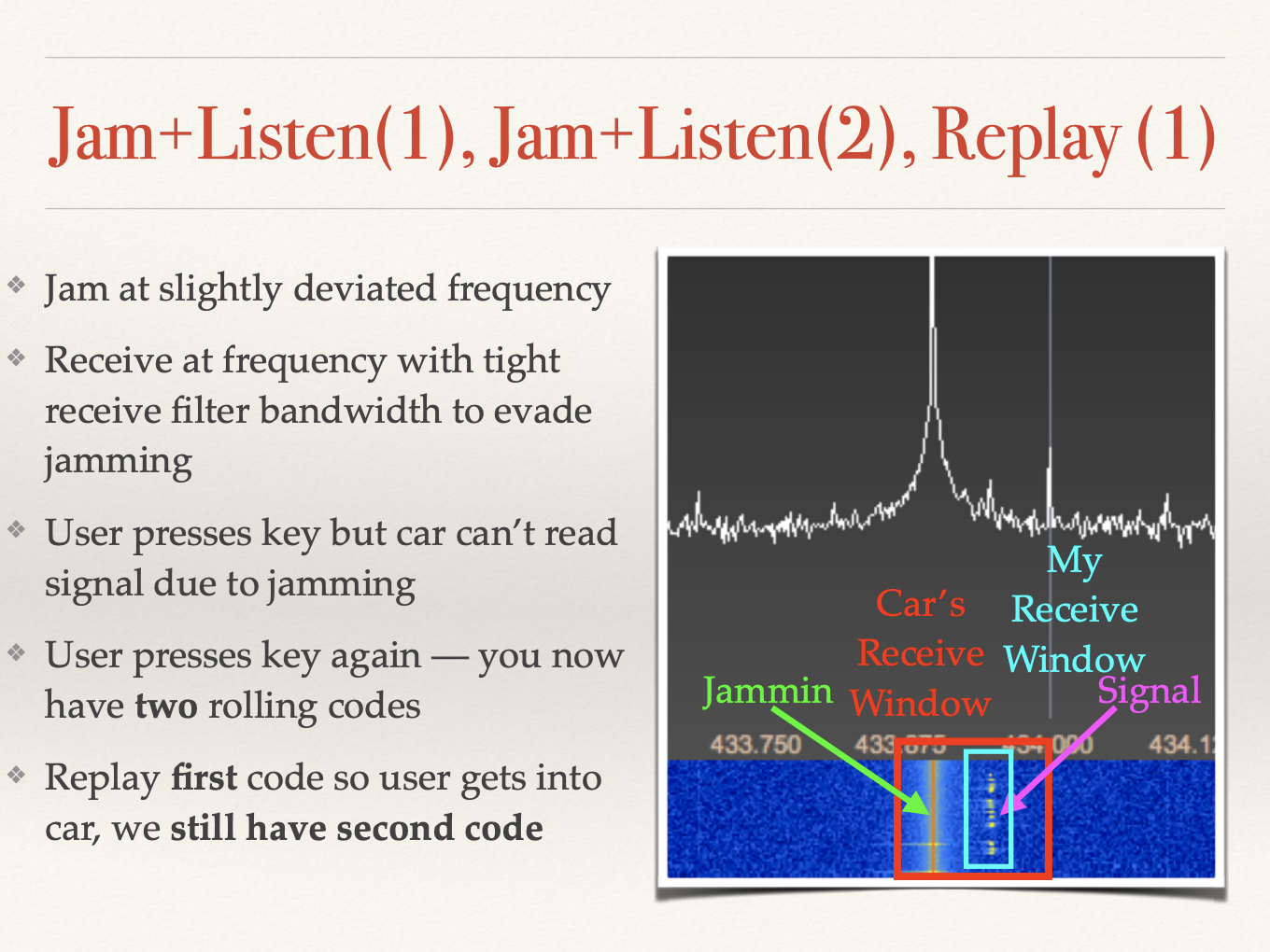
RECEIVING THE SIGNAL
For this attack, I used a YARD Stick one (YS1) and an RTL-SDR for receiving/transmitting any data. I used a GNURadio flow graph with the RTL-SDR to receive and decode the keyfob data, and RfCat with YS1 for transmitting the data. Yes, I know I didn't have to use GNURadio or an RTL-SDR for this, but I only have one YS1, and since i'm using it for jamming, I need a way to receive data while jamming.
First of all, I had to find the frequency the keyfob was operating at. To do that, I used GQRX and the RTL-SDR:
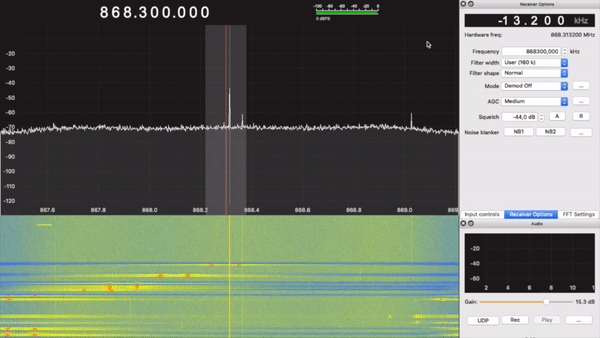
Here, we see two spikes. This indicates that the type of modulation being used is FSK, at around 868MHz.
This the GNURadio flow graph:
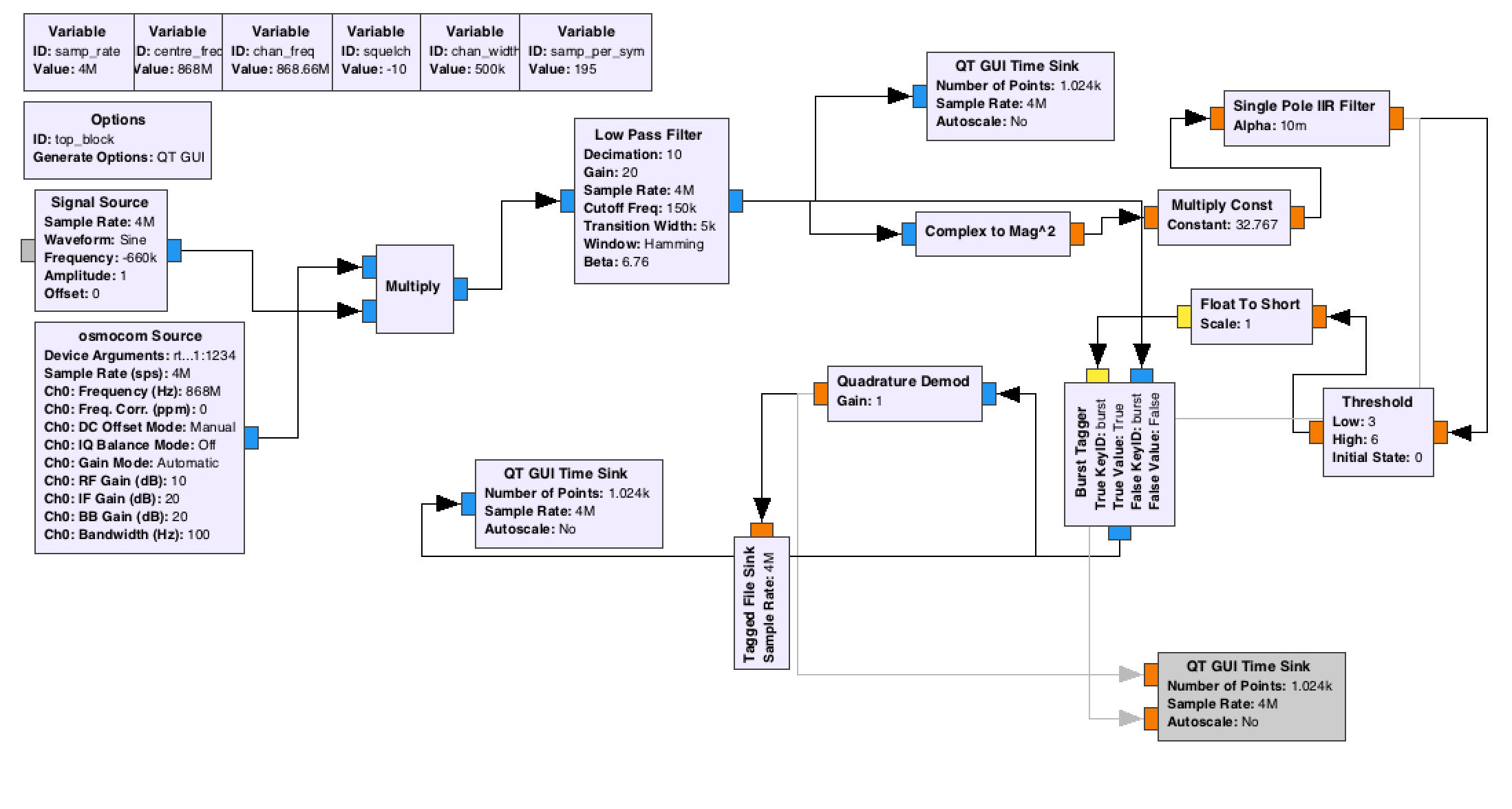
The output is simply raw data, that is then processed by my python script to obtain hex values for every piece of the data. (I did this so long ago that...
Read more » Gonçalo Nespral
Gonçalo Nespral



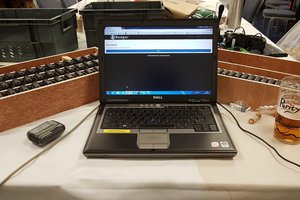
 Tryst
Tryst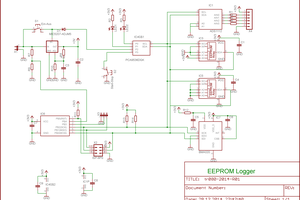
 Timo
Timo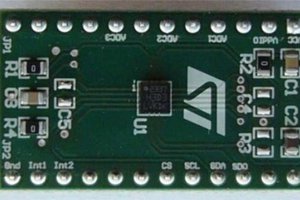
 Emach00
Emach00
Just want to mention that the yardstick one currently does not work with python3.